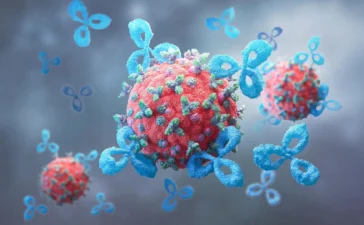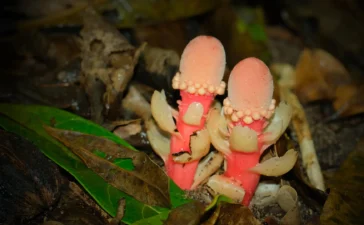Roach fish that migrate between different lakes and water courses have larger pupils and better eyesight than roach that stay in one place. The adaptation makes it easier for the red-eyed freshwater migrants to find food in murky waters. This is shown in a large study from Lund University in Sweden.
Animals’ eyes, just like those of humans, are a kind of window to the world. Eyesight controls important behaviour such as searching for food and avoiding predators. To investigate how migration-related challenges can affect the form and function of the eye, a research team, led from Lund University, chose to study roach.
Roach, a common freshwater species in Europe, engage in partial migration. This means that only part of the population migrates from lakes to connected water courses during the winter. Other individuals remain in the same environment throughout the year.
“We started by taking photos of the fishes’ eyes and then followed the migration patterns of 2,000 individual roaches over several years and in two different lakes by using implanted electronic transponders. It was shown that roach that migrated had larger pupils relative to individuals that chose to stay in the lake throughout the year,” says Kaj Hulthén, biology researcher at Lund University, who led the study.
The researchers could also show that larger pupils give migrating individuals a better chance to detect very small visual objects, such as zooplankton, in low-light conditions.
By combining empirical data on eye morphology of roach with theoretical calculations, the research team was able to estimate how visual range varies between individuals depending on pupil size in different light conditions. Such a detailed mapping of roach eyesight has never been done before.
“The fact that migrating individuals have an improved ability to detect visual objects such as zooplankton indicates strong selection for effective food searches. This is crucial to cover the energy needs that migration requires. These results correspond well with previous research, which showed that migrating roach with insufficient energy reserves run a higher risk of dying in the streams,” he says.
The new results help the researchers to understand how migration behaviour is formed by both ecological and physiological factors. The management of fish stocks could benefit from this knowledge, particularly in connection with environmental changes that affect light conditions and food availability in aquatic ecosystems.
“Roach play an important role in the ecosystem. By understanding why some individuals migrate and other don’t, we can gain a deeper insight into how fish populations respond to environmental changes, which in turn could affect both fisk stocks and the lake dynamics as a whole,” says Kaj Hulthén.
You Might Also Like
Eating more vitamin C can physically change your skin
Scientists at the University of Otago, Faculty of Medicine -- Christchurch Ōtautahi, have identified a direct connection between how much...
MIT scientists strip cancer of its sugar shield
A research team from MIT and Stanford University has developed a new technique designed to push the immune system to...
This “mushroom” is not a fungus, it’s a bizarre plant that breaks all the rules
In the damp shade beneath moss-covered trees, high in the mountains of Taiwan and mainland Japan or deep within the...
A quantum mystery that stumped scientists for decades is solved
A global research team led by Rice University physicist Pengcheng Dai has verified the presence of emergent photons and fractionalized...









